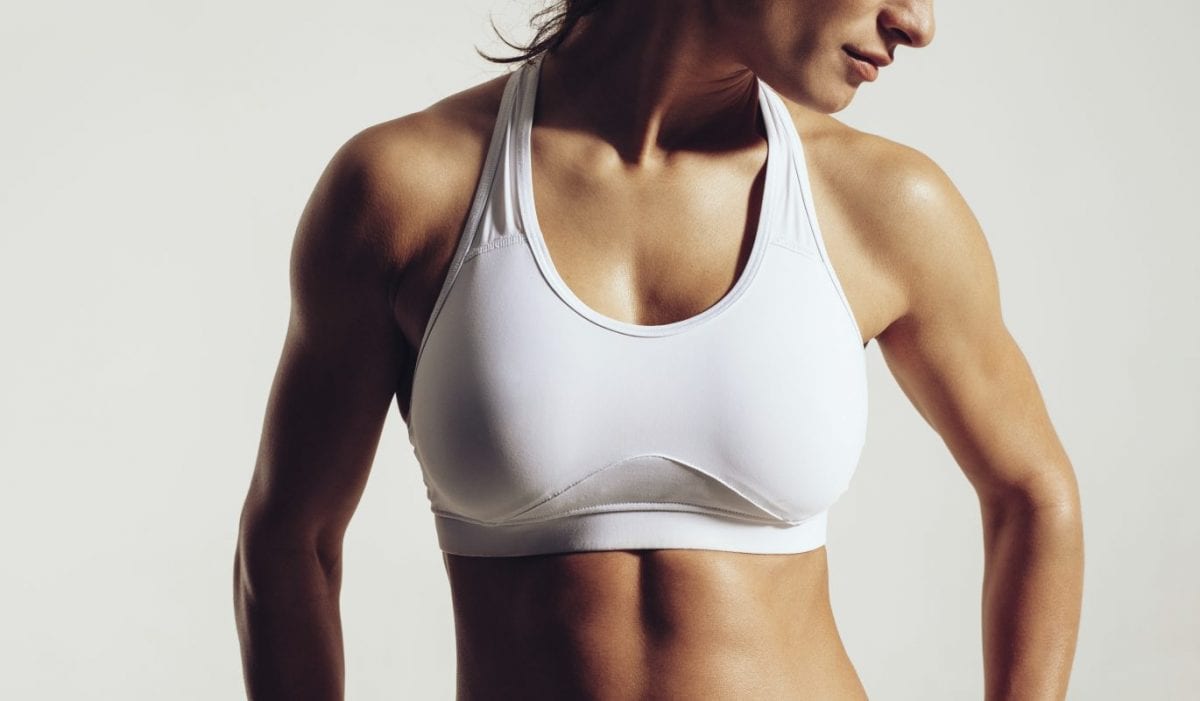Weight lifting is one of the essential pieces of a complete workout. Beyond cardio, weight lifting is what can help give women the amazing, strong body of their dreams. Yet, one of the biggest downsides to weight lifting for women can be a natural reduction in breast size, as the breast fat is replaced with muscle.
The solution? Silicone breast implants.
But how can you lift weights after you have your implant procedure? What do you need to know before you have your augmentation done? What if you choose to remove or replace your breast implants? Here’s what you need to know about weight lifting with implants.
Implant Placement
While many breast implants are placed underneath your pectoral muscle, women who are big into fitness or bikini competitions or even women who do Crossfit and heavy lifting normally opt to have the implants placed over the muscle. This really only applies to dedicated lifters, but having the implants over the muscle will mean that there is less muscle to implant interference than there would be with the implant under the muscle. You need to talk to your doctor about this before you go forward with your augmentation procedure.
After your Surgery
Following your breast augmentation surgery, you will want to do light exercise for the first six weeks. This includes walking, but not anything that is high-intensity or high-impact. Lifting during this period can affect your recovery, including how you heal and even the appearance of your implants.
You should be able to return to your regular lifting workout within eight to 12 weeks following the surgery. Keep in mind that you will have a new shape and your balance and muscles might still be adjusting, so you will need to go slowly.
Support
As you know, lifting weights will contract your chest muscles. When you have breast implants, this translates to compressing your implants when your chest muscles contract. While you might be happy with how perky your breasts are with the implants, a supportive sports bra will help keep your implants solidly in place as you lift weights, taking away and undue pressure on your chest.
If you notice that your back is getting sore following a lifting session, you will need to review your technique and see what you need to change before continuing to lift. There is no reason to hurt yourself.
Technique
Having a good technique for weight lifting is important all of the time, including after you receive breast implants. Your muscles and joints will be adapted to lifting weights without the implants in the front of your chest and will therefore have to acclimate to the new weight distribution. Having proper technique will retrain these muscles properly, preventing any injuries that could occur otherwise.
Proper breathing techniques during lifting will also help create more room in your chest cavity and take any excess pressure off of your chest. Slow, controlled breaths are the safest way to go.
Bottom Line
You do not need to quit doing your chest work or lifting weights after you get a breast augmentation, but you do need to take at least a two to three month break to allow your body plenty of time to recover. If you are a dedicated weight lifter, you need to speak to your doctor before the procedure and talk about your exercise regimen and implant expectations.
The most important factor here is to make sure that you allow yourself plenty of rest and healing time in order to have the best results possible. You can return to your regular exercise routine once you have given yourself a chance to fully recover.








